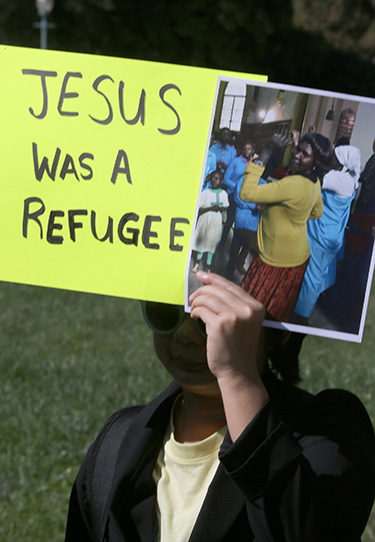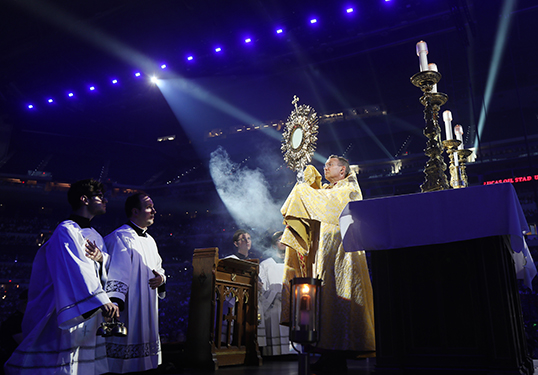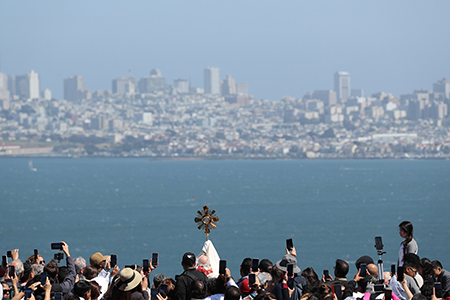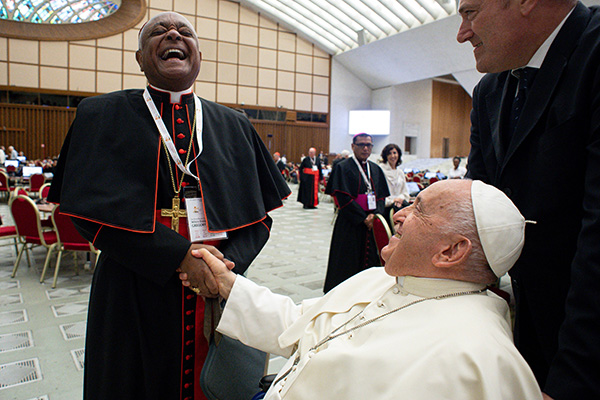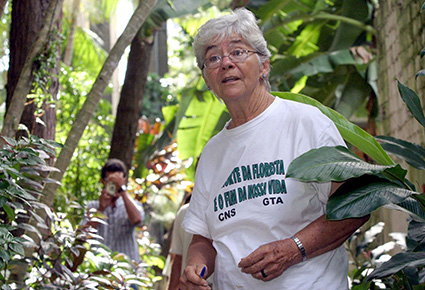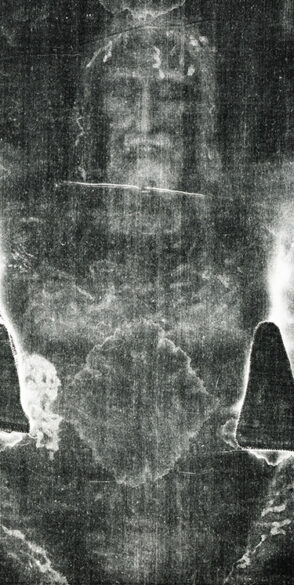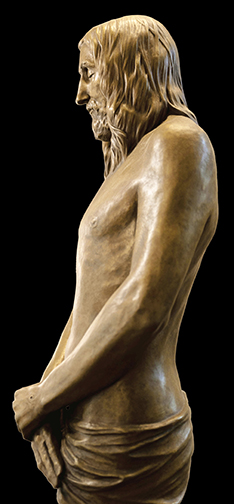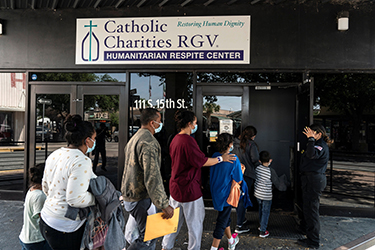NATION
INDIANAPOLIS (OSV News) – The Archdiocese of Indianapolis is investigating a possible Eucharistic miracle at St. Anthony of Padua Church in Morris, Indiana, following an incident in late February. The archdiocesan Office of Communications confirmed the investigation aided by a professional scientific lab, but declined further comment. According to social media posts by the Catholic group Corpus Christi for Unity and Peace, a woman reported seeing blood on two consecrated hosts that had fallen on the floor. After being placed in water to dissolve, the next day, the hosts appeared to have a thin layer of skin with blood on it, according to the woman’s claims. Photos of the hosts, taken by the woman, were shared online. Father Terry Donahue, a scientific expert on Eucharistic miracles, explained that new Vatican guidelines require the local bishop to notify the Holy See and national episcopal conference at the beginning of an investigation and to ensure the specimens are carefully preserved for further examination.
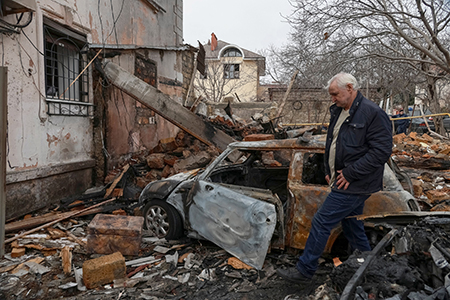
WASHINGTON (OSV News) – The U.S. bishops urged Catholics to answer Pope Francis’ call for prayer for the people of Ukraine in their Lenten reflection as that nation fends off Russia’s invasion. In a Lenten reflection released by the U.S. Conference of Catholic Bishops on March 3, Archbishop Timothy P. Broglio, president of the conference, wrote, “As we begin the holy Season of Lent, a time of prayer, penance, and charity, we join our Holy Father, Pope Francis, in his solidarity with the ‘martyred people of Ukraine.’” “We pray and hope that the United States, in concert with the wider international community, works with perseverance for a just peace and an end to aggression,” Archbishop Broglio wrote. “As our Holy Father reminded us in 2024, courageous negotiations require ‘boldness’ to ‘open the door’ for dialogue.” Although the reflection did not mention either event, it was published shortly after Ukraine marked the third anniversary of Russia’s invasion on Feb. 24, and days after a tense Oval Office meeting between Ukrainian President Voldymyr Zelenskyy and U.S. President Donald Trump and Vice President JD Vance about the future of U.S. aid in that conflict.
PHILADELPHIA (OSV News) – At the start of Catholic Relief Services’ 2025 Rice Bowl initiative – an annual Lenten program blending almsgiving, meal-making and prayer to provide aid to overseas and domestic aid – Rice Bowl founder Msgr. Robert Coll, a retired priest of the Diocese of Allentown, Pennsylvania, reflected on the program as it marks its 50th year. He described how the initiative, which he launched as an Allentown pastor in 1975, rose to the national level as part of the 41st International Eucharistic Congress in 1976 and severe global famine at the time. “If there were grave problems in the world, to ignore them would itself be unacceptable as a Catholic and as a Christian,” he said. Rice Bowl “mixed the physical with the spiritual,” he said, adding that “it was never intended to be a collection,” but “an informative experience for the family.” Amid the U.S. government’s current suspension of foreign aid, Msgr. Coll said Rice Bowl could be in “its strongest moment, because the more funds you receive from the people, the greater pressure you put on governments to assist in a variety of ways.”
VATICAN
ROME (CNS) – The journey of Lent “unfolds amid the remembrance of our fragility and the hope that, at the end of the road, the Risen Lord is waiting for us,” Pope Francis wrote in his homily for Ash Wednesday. “Indeed, the ashes help to remind us that our lives are fragile and insignificant: we are dust, from dust we were created, and to dust we shall return,” said the pope’s text. Although the 88-year-old pope was still in Rome’s Gemelli hospital March 5, the day Latin-rite Catholics received ashes and began their Lenten observances, the Vatican released what it said was the homily he prepared for the occasion. Cardinal Angelo De Donatis, who read Pope Francis’ homily prefaced the reading by saying, “We are deeply united” with Pope Francis, and “we thank him for offering his prayer and his sufferings for the good of the whole church and the entire world.”
VATICAN CITY (CNS) – Despite her distress at losing the 12-year-old Jesus, Mary’s search for her son is a model of every Christian’s journey to deepen their relationship with Christ, Pope Francis said in a prepared message. In the catechesis prepared for his general audience March 5, the pope reflected on the episode from St. Luke’s Gospel in which Mary and Joseph lose Jesus during a pilgrimage and search anxiously for him for three days before finding him in the Temple engaged in discussion with the elders. “Throughout this journey, the Virgin is a pilgrim of hope, in the strong sense that she becomes the ‘daughter of her son,’ the first of his disciples,” the pope’s text said, emphasizing that Mary, though chosen as the mother of God, had to undertake her own journey of faith. During the Holy Year 2025, Pope Francis’ general audience talks have been focusing on “Jesus Christ our hope,” starting with a look at the Bible stories of Jesus’ infancy and childhood. Pope Francis has been hospitalized for treatment of bilateral pneumonia since Feb. 14, but the Vatican has continued to publish the texts prepared for his general audience each Wednesday. The text for March 5 reflected on how Mary’s understanding of Jesus grew gradually, through moments of joy but also through hardship: She carried Jesus while pregnant to Bethlehem, fled with her family to Egypt to protect her son and ultimately stood by him at the foot of the cross.
WORLD
BRUSSELS (OSV News) – Catholic bishops in the European Union are calling for unity in support of Ukraine amid growing tensions between the U.S. and the war-torn country invaded by Russia Feb. 24, 2022. In a March 4 statement, the Commission of the Bishops’ Conferences of the European Union emphasized the importance of EU solidarity, stating that Ukraine’s fight for peace and territorial integrity is critical not only for the nation but for the future of Europe and the world. The statement comes after a tense Feb. 28 meeting between U.S. President Donald Trump and Ukrainian President Volodymyr Zelenskyy. EU leaders, however, rallied behind Zelenskyy during a London summit, where peace plans were discussed. COMECE reaffirmed its support for Ukraine, condemning Russia’s violation of international law and calling for accountability. The bishops emphasized the need for a peace agreement based on justice, international law and security guarantees, while urging EU membership for Ukraine. “As the contours of a new global security architecture are currently being redrawn, it is our profound hope that the European Union will remain faithful to its vocation to be a promise of peace and an anchor of stability to its neighborhood and to the world,” the bishops said.
WARSAW, Poland (OSV News) – Poland honors the “cursed soldiers” throughout March – a group of patriots who fought against communist rule after World War II, motivated by an unwavering faith in God. Following the war, Poland was under Soviet influence, and the communist government was imposed. The resistance continued with the soldiers of the wartime Polish Home Army, which rejected the Soviet-aligned regime and fought for Polish independence. These soldiers, guided by their Catholic faith, took military oaths to defend Poland to the death under the virtues of “God, honor and homeland,” and were participating in daily prayers and rituals. The clergy played a vital role, offering spiritual support and risking their lives to serve the underground fighters. One notable figure, Capt. Witold Pilecki, voluntarily entered Auschwitz to organize a resistance movement in the German death camp, later offering vital intelligence to the Allies. He was arrested by the communists, tortured, and executed in 1948. His last request to his wife was that she read “The Imitation of Christ” by Thomas á Kempis to their children after his death. The “cursed soldiers” are remembered each year on March 1, the National Day of Remembrance, which marks the death of the resistance’s leadership in 1951.


